|
As news continues to circulate regarding COVID-19 (Coronavirus), we at Family Eye Care would like to share with our patients valuable information from the American Academy of Ophthalmology that relates to eye safety and the current pandemic.
Conjunctivitis Health officials believe viral pink eye, or conjunctivitis develops in about 1-3% of patients diagnosed with COVID-19. This virus can spread by coming in contact with discharge from an infected person’s eye. Be aware not all Conjunctivitis is directly related to COVID-19. Protection from COVID-19 While there is a lot of concern about COVID-19, common sense precautions can significantly reduce your risk of infection. Wash your hands often, follow proper contact lens hygiene and avoid touching or rubbing your nose, mouth and especially your eyes. Changes to Procedures
Contact Lens Hygiene
Glasses Offer Protection
Prescriptions
Avoid Touching Your Eyes
For more information on eye safety related to the COVID-19, visit the American Academy of Optometry or the CDC websites (links below), or contact our office at (630) 377-2020 to speak with a doctor or technician.
3 Comments
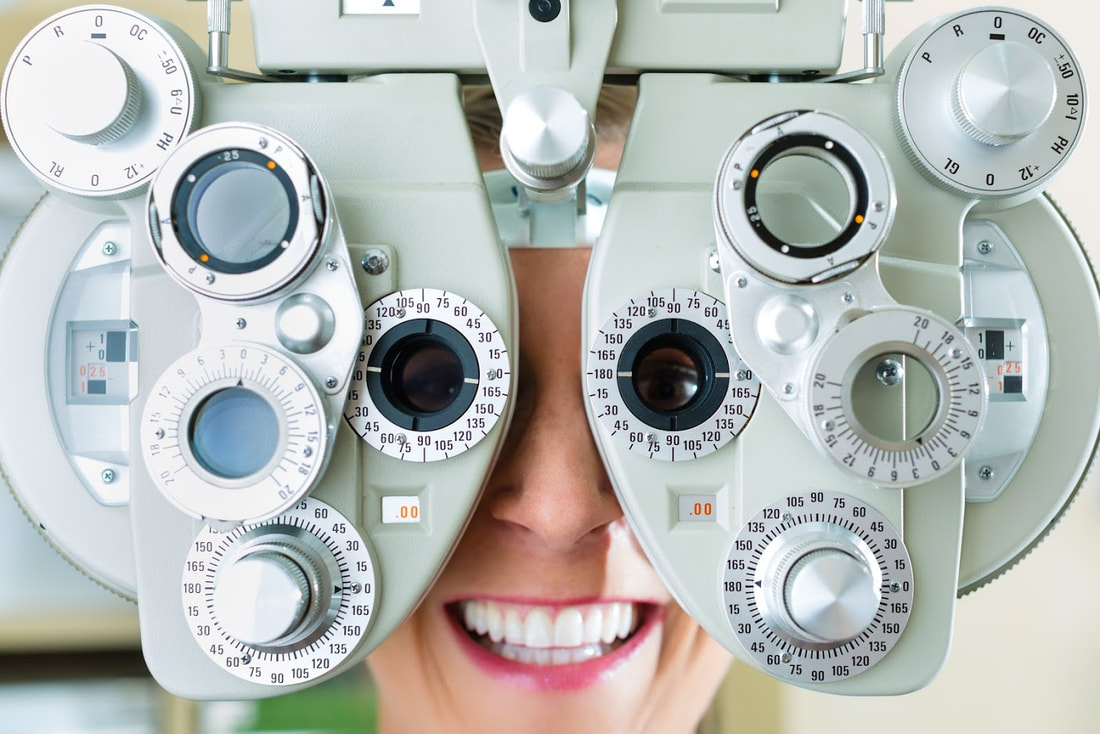 Your eyes are an important part of your physical health and also your quality of life. Unfortunately, many people take their eyes and vision health for granted. Certain habits may not seem like big problems, but these habits can actually affect the underlying health of your eyes and your vision quality. Thankfully, help is available if you want to protect your eye health. This guide and your eye doctor will help you stop making a few common mistakes that can hurt your eyes. 1. Avoiding the Eye DoctorOne of the most common and one of the worst mistakes you can make is avoiding the eye doctor. Regular visits to the eye doctor are imperative for a few reasons. Eye exams will help determine if you have issues affecting your vision quality, such as nearsightedness or farsightedness. Once detected, you can begin correcting your vision quickly by wearing glasses or contact lenses. Although important for your actual eyesight, regular eye exams are also crucial for determining if you are at risk of any eye disorders. Exams are important for early detection, which is key for preventing certain disorders, such as cataracts and glaucoma, from worsening. When you see an eye doctor depends on a few factors, including your age, health, and if you have a family history of eye disorders. If you are between the ages of 18 and 60 and have no current issues, eye exams are recommended every two years. If you are over 60 years of age, seeing your eye doctor once a year is best. 2. Rubbing your EyesEveryone experiences an itch or slight discomfort in and around the eyes. Even though it can be beneficial and pain-relieving in some cases, rubbing the eyes excessively can do more harm than good. Your hands will carry numerous germs and bacteria, which can be easily transmitted if you rub and scratch your eyes. Germs, bacteria, and even loose dirt or dead skin cells could become trapped inside your eyes, increasing your risk of allergies and even infections. If you rub your eyes in an attempt to remove a fleck of dirt or another particle, you may end up pushing the foreign object further into the eye, scratching or even damaging the lens or cornea. Recent studies have also shown constantly rubbing your eyes could wear down the cornea. Known as keratoconus, this thinning of the cornea can greatly distort your vision. Instead of rubbing your eyes, consider flushing the eye out with a saline solution or artificial tears. If this is not successful, visit your eye doctor for assistance. 3. Not Wearing SunglassesAnother mistake you may be making is not wearing sunglasses. To understand why sunglasses are important, you need to understand how the sun can be so dangerous to your eyes.
The sun's ultraviolet rays are harmful to your skin and your eyes. Constant exposure, which you may not even realize you are receiving, can weaken the cornea and lens, increasing the risk of cataracts and glaucoma. Although shocking to learn, 20 percent of cataract cases stem from UV exposure. The constant exposure to the sun's rays can also affect your vision. UV exposure can damage the retina, as well, leading to macular degeneration, which is the leading cause of blindness in the United States. Wearing sunglasses, whether you need prescription lenses or not, can block out ultraviolet radiation, protecting your eye's overall health. When you choose sunglasses, opt for lenses that block out 99 to 100 percent of UVA and UVB radiation for the most effective protection. Protecting your eyes and vision is possible with proper understanding and professional care. For more information on caring for your eyes and vision, contact Family Eye Care. You may become overwhelmed at just the sight of the myriad contact lens types on the optometrist office shelves. With all of the options, you may wonder how your optometrist decides which contact lens type is best for you. Your optometrist takes great care to choose the contact lens type that will keep your eyes feeling comfortable while preventing any contact-induced eye problems in the future. Read on to learn four factors your optometrist takes into consideration when choosing your contact lens type. 1. Oxygen Transmissibility A contact lens forms a slight barrier between your cornea and the oxygen-containing air your cornea needs to "breathe." When your corneas don't receive the oxygen they need, eye problems can develop due to corneal hypoxia. Corneal hypoxia can cause a variety of eye problems, including corneal neovascularization. This condition occurs when new blood vessels grow along the surface of your cornea to help transport oxygen-filled blood to your oxygen-deprived corneas. This neovascularization cannot only be unsightly, causing red and inflamed eyes, but it can also lead to vision loss when it becomes severe. One way to prevent corneal hypoxia is to limit your contact lens wear. However, if you tend to wear your contact lenses for long periods of time, your optometrist will recommend a contact lens that has high oxygen transmissibility. These lenses are made of materials that allow more oxygen to reach your corneas while you are wearing them to reduce the chances of corneal hypoxia-related eye damage. 2. Water Content The water content of different types of contact lenses can vary greatly. Some contain under 40 percent water while others contain almost 80 percent water. While most contact lens wearers benefit from contacts with water content that lie somewhere in the middle, some people require high- and low- water content contact lenses to maintain their eye health and contact lens comfort. Contacts with superior oxygen transmissibility often (but not always) contain a high water content, so high-water lenses are good for contact lens wearers prone to hypoxia. However, as the water content of these lenses evaporate over the course of the day, they pull more of your eyes' natural tears into them to keep them moist. Low water contact lenses are better for people who suffer from dry eye, because they pull fewer of the eyes' natural tears into them throughout the day. In addition, low water content lenses are thinner than those with high water content, and some contact lens wearers find thinner lenses more comfortable. 3. Special Lens TechnologyMany contact lenses are now equipped with special technologies that benefit people with specific eye problems or lifestyles. For example, if you dislike bright lighting or find that it causes eye strain, your doctor may recommend contact lenses with photochromic technology. This technology causes the lenses to darken when you are inside of brightly lit rooms or outside in the sun to reduce light-induced eye strain. If you spend long hours working in front of a computer, your eye doctor may recommend lenses equipped with special technology designed to reduce the eye strain that staring at digital devices can cause. You can also find numerous lenses on the market today equipped with special technologies that help combat dry eye. 4. Your PreferencesIf you have heard of or read about a new contact lens type that you think may prefer, then don't be afraid to speak up and ask your eye doctor if you are a good candidate.
In addition, don't be afraid to ask your eye doctor for disposable contact lenses if you currently wear typical daily wear lenses or vice versa. While daily wear lenses are cost-efficient and can keep your eyes in good health if you take great care of them, disposable lenses offer additional convenience and can help keep your eyes in optimal health with no required daily cleaning regimen. Reach out to the staff at Family Eye Care to schedule an eye exam and discuss your contact lens options today. Have hormones affected your vision? From birth control use to pregnancy and menopause, a woman goes through an array of hormonal changes through her lifetime. If you are not sure what these changes have to do with your eyes, take a look at how hormones can impact vision. Birth Control Vision ChangesSome, but not all, women may experience blurry or worsening vision after starting hormonal birth control. Non-hormonal contraception (such as a diaphragm or copper IUD) will not cause eye changes. Birth control-related vision changes typically have one of two primary causes. The estrogen (hormone) in your birth control can cause eye inflammation. This can interfere with the eye's oil-producing glands, resulting in dryness and blurred vision. Estrogen can also cause corneal thickening. Corneal changes cause light to refract differently in the eye, blurring vision or making seeing correctly harder. If you have a sudden vision change after starting hormonal birth control, contact your medical provider and eye doctor immediately. Even though these minor estrogen-related changes are the likely culprit, hormone-related hypertension (high blood pressure) is also a possibility. Vision changes caused by a sudden blood pressure increase may signal an emergency medical situation. Pregnancy Vision ChangesMorning sickness, swollen feet, and a bulging baby bump are not the only body changes that happen with pregnancy. The hormonal ups and downs during the three trimesters can also cause eye and vision issues. Dry eye syndrome is a common hormone-induced pregnancy symptom that many women must contend with. While dry eye can happen any time during pregnancy, this is most likely (or most likely to worsen) during the hormonal shift at the end of your first trimester. Like with hormonal birth control, the eye's oil glands are often the cause of pregnancy-related eye issues. The hormones produced during pregnancy can cause changes in the oil glands, creating an unstable tear film that may lead to excessive drying. Untreated dry eyes can result in temporary blurriness. If you experience this, talk to your eye-care professional about using artificial tears or another type of treatment to ease discomfort and restore your vision. Again, like with birth control, much more serious medical conditions can also cause vision changes during pregnancy. Preeclampsia is a pregnancy condition that causes hypertension and severe swelling. While some women have no noticeable symptoms of this type of blood pressure increase, others experience headaches and vision changes. If you are pregnant and have a vision change, contact a medical professional immediately. Menopause Vision ChangesEstrogen and progesterone hormonal levels typically drop during and after menopause. Along with causing hot flashes and other well-known symptoms, this hormonal change can also usher in a period of dry eyes.
Menopause-related dry eyes are often a two-fold problem. Most people, both men and women, experience some level of decreased tear production as they age. That makes the menopausal age a time when any adult might have to deal with dry eyes. Beyond the normal drop in tear production that happens with age, estrogen and androgen hormone changes can affect the eyes — making them feel dry and itchy. Even though previous research into post-menopausal dry eye pointed at estrogen as the only influence, some new evidence exists suggesting that decreasing levels of androgens (sex hormones) may also interfere with tear production. Treating menopausal or post-menopausal dry eyes typically includes using artificial tears or medications that stimulate tear production, reduce eyelid swelling, or decrease corneal inflammation — depending on the cause of the dry eye. Do you have vision changes due to hormones? Contact Family Eye Care for more information. We look forward to helping with your vision care needs. Protecting your child's vision and promoting good eye health should begin very early on. A parent can do many things to ensure the eye health of their children, as well as things that parents can avoid. Here are a few dos and don'ts you might want to begin following now. 1. Do Help Develop Your Infant's Visual Skills Crib toys such as colorful mobiles can help to stimulate vision in infants. In addition, offer your baby bright and colorful rattles to play with. Doing so may help your child recognize colors from an early age. As your baby grows older, choose toys that may help develop vision and hand-eye coordination. Keep in mind that the toys you choose should be age-appropriate. Hold objects in front of your child and move the objects around as well. Your baby will learn how to track objects with his or her eyes, and this helps vision skills develop. Although this may seem a bit rushed to you, some experts recommend an eye exam beginning at the age of six months. At the very least, your little one should have a full vision exam before beginning school. 2. Don't Forget Safety Equipment for Playing Sports If your school-aged child enjoys playing sports, don't forget to have him or her gear up with safety equipment designed for protecting the eyes. Did you know that eye injuries are a leading cause of childhood blindness in the United States? Protective eyewear can help your child avoid serious injury that may cause permanent damage or impair vision. Whether your child wears safety glasses or goggles, insist he or she gears up with the right eyewear that fits well. Know that specially designed protective eyewear will not impair your child's vision, and they are usually impact resistant. Look for polycarbonate materials. If your child currently wears eyeglasses, speak to the optometrist about protective eyewear. The eye doctor may choose to write a prescription for sports goggles that matches your child's eyeglass prescription. 3. Do Provide a Healthy Diet For optimum eye health, provide a nutritional diet for your child. You may have heard that beta carotene and lutein promote healthy eyes and vision. Beta carotene converts into vitamin A, which helps support eye health. If your child's doctor recommends a daily vitamin, look for vitamin A in the supplement. A balanced diet that includes fresh fruits and vegetables is also beneficial for your child's eyes and vision. Carrots, green leafy vegetables, and berries are a few good choices. Teach your child good eating habits from an early age to get him or her off to a good start. If your child doesn't care much for fruits and vegetables, consider blending them into a tasty smoothie beverage. 4. Don't Ignore the Signs of Vision Problems Recognizing the signs of vision problems early on is very important. A great percentage of learning comes from visual means, so be alert to difficulties your child may experience.
Does your child squint frequently, especially while reading or watching TV? Does he or she rub his eyes more than occasionally? While reading, does your child hold the book very close to the face? Look for clues that your child may have a vision problem that needs evaluation. In addition to the above, other signs may indicate a problem. If your child complains of headaches or has suddenly fallen behind in schoolwork, this may be due to vision deficiencies. Schedule an appointment with an eye care specialist as soon as possible. Your child may need prescription eyeglasses or other treatment, and a delay may worsen the situation. High blood pressure affects an estimated 103 million adults in the United States, according to the American Heart Association (AHA). If left untreated, hypertension (high blood pressure) can impact your heart, brain, kidneys, and arteries. But that's not all. Take a look at the eye-hypertension connection and what you need to know about your vision after a high-blood-pressure diagnosis. Does Hypertension Always Affect Vision?If left untreated, hypertension can impact vision in many different possible ways. But if your high blood pressure is under control, it's not likely to cause these problems. This makes getting prompt medical attention for hypertensive symptoms, checking your blood pressure regularly, and following your doctor's orders (including taking prescribed medications and making lifestyle changes) necessary. Along with treating your blood pressure, visiting the eye care professional is an important part of the equation. Routine checkups (set on a schedule that your ophthalmologist or optometrist makes) can reduce the likelihood of permanent vision damage. How Does High Blood Pressure Impact Vision? Uncontrolled high blood pressure can cause the following complications with your eye health:
What Can the Eye Doctor Do to Help? If you have hypertension, the eye doctor can catch potential problems before they serious damage or destroy your vision. This makes scheduling and keeping regular appointments a priority for patients with hypertension. In most cases, controlled hypertension doesn't require extra or special visits to the eye doctor. Continue to get your vision checked annually, unless your doctor, the ophthalmologist, or the optometrist tells you otherwise. If you have concerns about how often you should have a full eye exam, talk to an eye care professional about your individual situation and needs. How Does the Eye Doctor Check for Hypertension-Related Problems? During the exam, the optometry professional will use a specialized tool, an ophthalmoscope, to look into the retina. The light from the ophthalmoscope allows the doctor to see into the back of your eye, checking for narrowing or leaking blood vessels.
This type of exam is non-invasive (meaning nothing goes directly into your eye, other than the light) and won't hurt. If the eye doctor needs more information or you have an existing eye disorder, you may need a fluorescein angiography. The eye doctor will start by dilating the pupils with drops. Next, they'll take pictures of your inner eye. After taking one round of pictures, the doctor will inject you (in the arm) with a dye called fluorescein. As the dye moves into your blood vessels and into the retina, the doctor will continue to take pictures of your inner eye. This allows the eye doctor to see changes or leaks in these vessels, which indicate a problem with your eye health. The sooner you catch hypertension-related eye problems, the less your vision will be affected. Contact Family Eye Care for more information. Switching to progressive bifocals can be difficult. Some people find that progressive bifocals make them nauseous, while others find that wearing them slows them down as they complete visual tasks. Navigating staircases can also be difficult when you're new to progressive bifocals. These tips can help you with the adjustment process. 1. Go Cold TurkeyYou may be tempted at first to flip back and forth between your old glasses and new. If you do this, you may wear your old glasses more than your new progressive bifocals. Wearing your old glasses when the new ones get tiring can just draw out the transition process. When you get your new glasses, put your old glasses somewhere inaccessible. Do not wear them unless you lose your new glasses or are otherwise instructed by your eye doctor. 2. Wear Your Glasses All the TimePut your glasses on first thing in the morning, and force yourself to wear them all day long. If your glasses are only intended for certain purposes or at certain times of the day, wear them even when you don't need to, to get used to the sensation of having them on your face. 3. Know When to Take Them OffNew glasses can cause eye strain, especially if those new glasses force you to rethink how you use your eyes and body when conducting daily tasks. If you start to get headaches from using your eyeglasses, take them off until the headache goes away. If you experience headaches on a regular basis, check in with your eye doctor. Your eye doctor may need to make adjustments to your prescription. 4. Avoid Looking at the GroundWhile you adjust to your new glasses, watching the ground while you walk can make you feel nauseous and uncertain on your feet. So keep your eyes up while you walk. Avoid looking at things that make you feel uncomfortable unless you have a specific reason to do so. Keeping your eyes only on those things that you can look at comfortably will help you through the adjustment period. 5. Hold the Railing When Navigating StairsStairs can be especially tricky for people who are new to progressive bifocals. When looking down, you may glance through the wrong part of your glasses to see that your feet and the stairs are fuzzy. This can be disorienting and may even lead to a fall. Always hold onto the railing when walking on a staircase for the first few weeks with your new glasses. This measure can prevent you from falling if you do become confused or disoriented. 6. Hold Reading Material at the Right DistanceYour progressive bifocals are meant to correct your vision when you read from a certain distance. Hold papers, books, and screens about 16 to 18 inches from your face, and look at them through the bottom of your glasses. If the words are unclear, adjust the location of the paper until the text is clear. If you have a hard time finding the sweet spot where text becomes clear through your progressive bifocal lenses, talk to your eye doctor. 7. Get Your Frames Professionally AdjustedBefore leaving the eye doctor with your new eyeglasses, have the frames adjusted by someone at the eye doctor's. Your glasses should feel comfortable on your face, without hugging the backs of your ears or the bridge of your nose too tightly. Work With Your Eye Doctor for More SuggestionsMaking the adjustment to progressive bifocals can take many days. Working with your eye doctor can help ensure that the transition is successful. At Family Eye Care, we're always happy to answer questions from patients who are new to progressive bifocals. To find out more about how you can make the adjustment, contact us today
When you have diabetes, you need to be mindful of all aspects of your health, including your eye health. As someone with diabetes, your risk of developing specific eye diseases - such as glaucoma, cataracts, diabetic retinopathy, and diabetic macular edema - is increased. You can lower your risk of contracting one of the many eye complications associated with diabetes by taking proper care of your body. Get an Eye Exam Every YearWhen you have diabetes, you need to make sure that you closely monitor your eye health. Many of the eye conditions listed above often do not have noticeable symptoms that you can detect on your own in the early stages. That is why it is so important to have your eye health monitored by an eye doctor when you have diabetes. With diabetes, you need to get an eye checkup at least once a year. When you go to the eye doctor, you need to make sure that they know that you have diabetes. The doctor will dilate your eyes to examine the optic nerve and retina for damage. An eye doctor can detect damage and changes in your eyes before you notice a change to your vision and can start intervention and treatment to protect your eyesight. Keep Your Blood Sugar Under Control You need to monitor your blood sugar on a daily basis. If you don't monitor your blood sugar over time, you may not realize that you are at risk for hyperglycemia. Hyperglycemia is the buildup of sugar in your body, which can lead to serious complications for your body, including your eyes. Hyperglycemia can damage the blood vessels in your eyes and can lead to blurred vision as well. You can manage your blood sugar by logging the food that you eat. There are lots of phone apps that make this task easier. You should be monitoring your blood sugar with a blood sugar monitoring and injecting insulin if necessary. You need to work with your doctor to make sure that your blood sugar is under control at all times. Ditch the Tobacco Next, you need to ditch the tobacco if you smoke or vape. It is well-known that consuming tobacco can contribute to both lung cancer and heart disease. However, many people don't realize that smoking can have a negative impact on your eye health as well. Smoking can increase your chance of contracting a wide variety of diseases, which are often the same ones that you have an increased risk of contracting due to diabetes, such as cataracts, glaucoma, and diabetic retinopathy. Smoking while having diabetes increases your risk of contracting a damaging eye disease. That is why it is important to start a smoking cessation program if you also have diabetes. You can work a program on your own, or you can work with a medical professional to help you stop smoking. A doctor can help you manage your withdrawal symptoms and help you establish healthy habits that will save your eyes and your overall health. Monitor Your Cholesterol & Blood Pressure Finally, you need to also monitor your cholesterol as well as your blood pressure. On their own, high cholesterol as well as high blood pressure can cause eye health issues. Combined with diabetes, high cholesterol and blood pressure can aggregate and worsen eye health issues.
You should aim to keep your LDL cholesterol readings lower than 100 mg/dL. It is a good idea to keep it under 70 mg/dL when you have other health conditions at play as well. High blood pressure is damaging to your eyes due to all the blood vessels that flow to the retina. You want your blood pressure to fall within the ideal range, which is from 120/80 to 90/60. You can manage both your blood pressure and cholesterol via exercise and healthy eating, which are habits you should already be engaging in to control your diabetes. To protect your eye health when you have diabetes, you need to make sure that you keep your blood sugar, cholesterol, and blood pressure readings low and that you ditch the tobacco. Please contact us at Family Eye Care to set up your annual eye exam. We will work with you and your doctors to ensure your eye health is monitored and protected against diabetic eye conditions. Winter is a time of year when many people experience dry eye. This happens because the air holds less humidity during the winter, and because air from furnaces can make the air even drier. Dry eye causes people's eyes to become itchy and red, and even leaves the eyes vulnerable to infection. Avoid and treat dry eyes with a variety of tips. Here's what you need to know about protecting yourself from dry eye this winter. Wear Glasses, Not ContactsContacts can dry out your eyes, so wearing contacts in winter when your eyes are already red and itchy can cause problems. If you normally wear contacts, switch to glasses for the winter. You can go back to contacts in the spring and summer when humidity returns. Run the HumidifierRun a humidifier in parts of your home where you spend the most time, or in parts of the home that are the driest. The bedroom and living room are good candidates for the humidifier. If you spend a lot of time in your home in the winter and you also have money for a major home improvement, talk to a contractor about having a whole house humidifying system installed. This will make your entire home more comfortable in the future. Stay HydratedDrink lots of water throughout the winter. This makes it easier for your body to produce tears. Drink at least 8 eight-ounce glasses of water daily. If you're an athlete and you're spending a lot of time working out, you may need to drink more. Consume sports drinks to replace electrolytes that are lost throughout the day. Keep Distance From Heat SourcesHeat sources can be very drying, especially for your eyes. Avoid sitting next to heat sources that blow in your face. If you must sit next to a heat source, blink your eyes more than normal to keep hydrating the surface of your eyes. When in the car, blow the heat down toward your body and away from your eyes. You can also turn on the heat vents near your feet and turn off the heat vents near your face. Avoid Rubbing Your EyesRubbing your eyes exacerbates your problem, especially if your hands are dirty. In fact, rubbing your eyes with dirty hands could even lead to an infection. If your eyes are very itchy and you feel like you must rub them, protect your eyes by using a tissue instead of your hands. Use Artificial TearsArtificial tears help keep your eyes moist. Use artificial tears throughout the day every time your eyes start to feel itchy and dry. Artificial tears can be purchased from a store without a prescription. See Your Eye DoctorIf the artificial tears aren't enough to keep you comfortable, see your eye doctor about your problem. Your eye doctor may be able to prescribe a more powerful remedy that helps you maintain moist, healthy eyes. Prescription eye drops moisten the eyes while also treating the underlying physical issues creating your dry eyes. Your eye doctor can also check for any other conditions that could be causing your eyes to be dry. If your doctor discovers a problem causing the problem, the eye doctor can prescribe other treatments and medications to help. Contact UsFor more information about why dry eye occurs in winter and what else you can do about it, contact a qualified and experienced eye doctor in your area. At Family Eye Care, we'll be happy to answer your questions about the various conditions you might experience in winter and throughout the year. Call us today to learn more.
Do you struggle to see what's in front of you? Is it a challenge to read signs? Does your child have difficult reading the board in school? If you answered yes to any of these questions, you or your child may need a comprehensive vision examination at Family Eye Care in Geneva, IL. Learn About Comprehensive Vision ExamsThe primary purpose of comprehensive vision examinations is to determine whether you need corrective lenses and if so, what prescription you need. These examinations are not medical exams, though they do sometimes screen for basic ocular diseases. During our comprehensive vision exams we test the sharpness of your vision, the range of eye movement, and your depth perception. Our tests generally also test for color blindness. The key component of our comprehensive vision exam is a refraction test, which measures farsightedness, nearsightedness, astigmatism, and presbyopia. After this test, a precise prescription is determined. With a new prescription, you can update your glasses, prescription sunglasses, and contacts. The prescription is valid for 12 months from the date of the exam. Discover Our ServicesWe are committed to providing comprehensive vision care to you and your entire family. Our staff create a friendly and inviting atmosphere to make our office comfortable for you and your kids.
Our optometrists recognize that everyone may need eye care, so we created our own vision insurance plans to make our comprehensive vision exams more affordable. We even offer Medicare so that elderly patients can receive the eye care that they need. Our family-owned optometric practice is dedicated to providing the high-quality and personal care that you and your family need. We hope you feel relaxed and comfortable coming to us with any eye care needs. Schedule your comprehensive vision examination with Family Eye Care in Geneva, IL, today through our online form or by calling (630) 377-2020. |
Archives
April 2020
Categories |
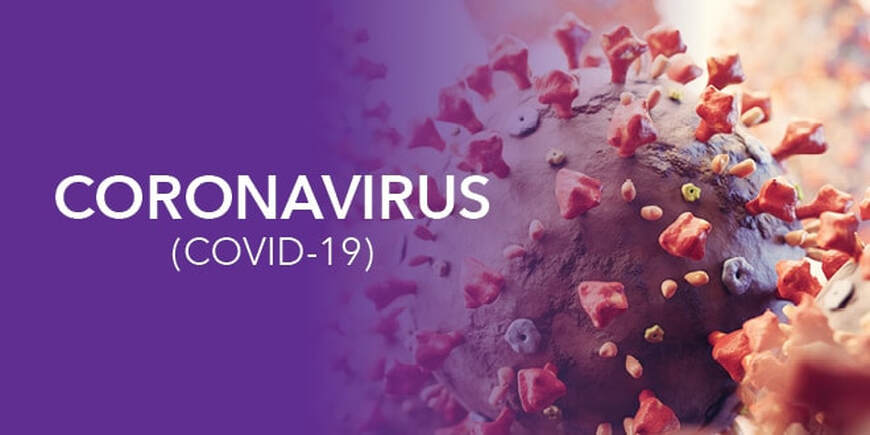
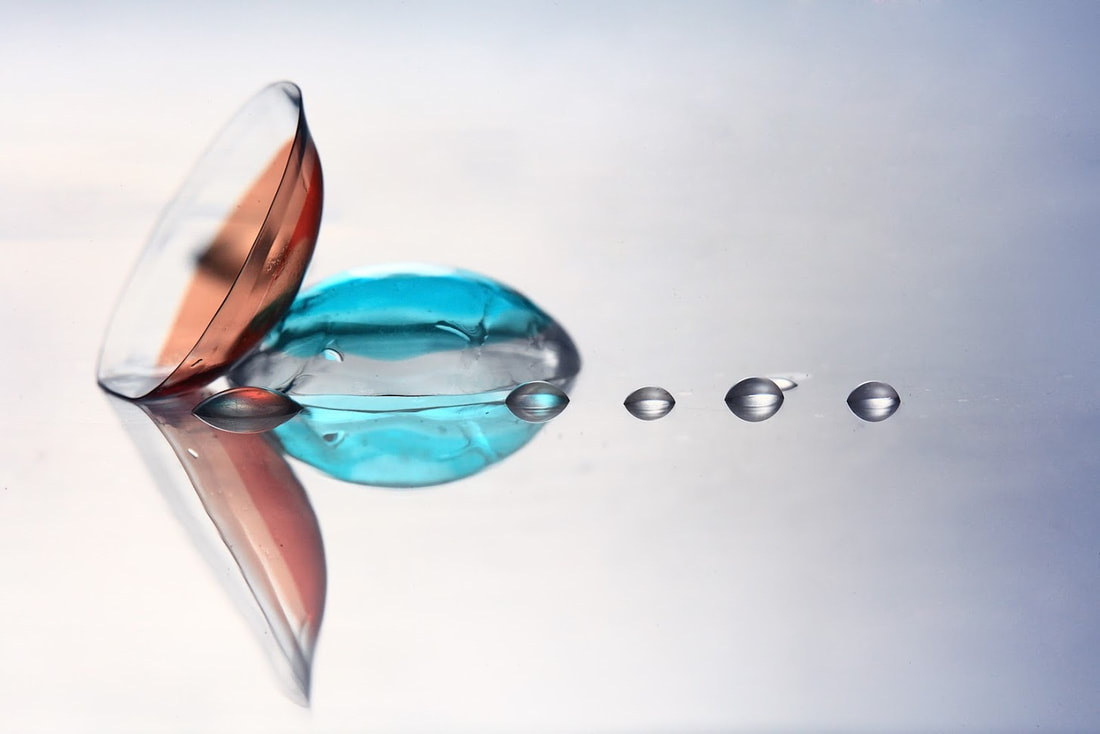
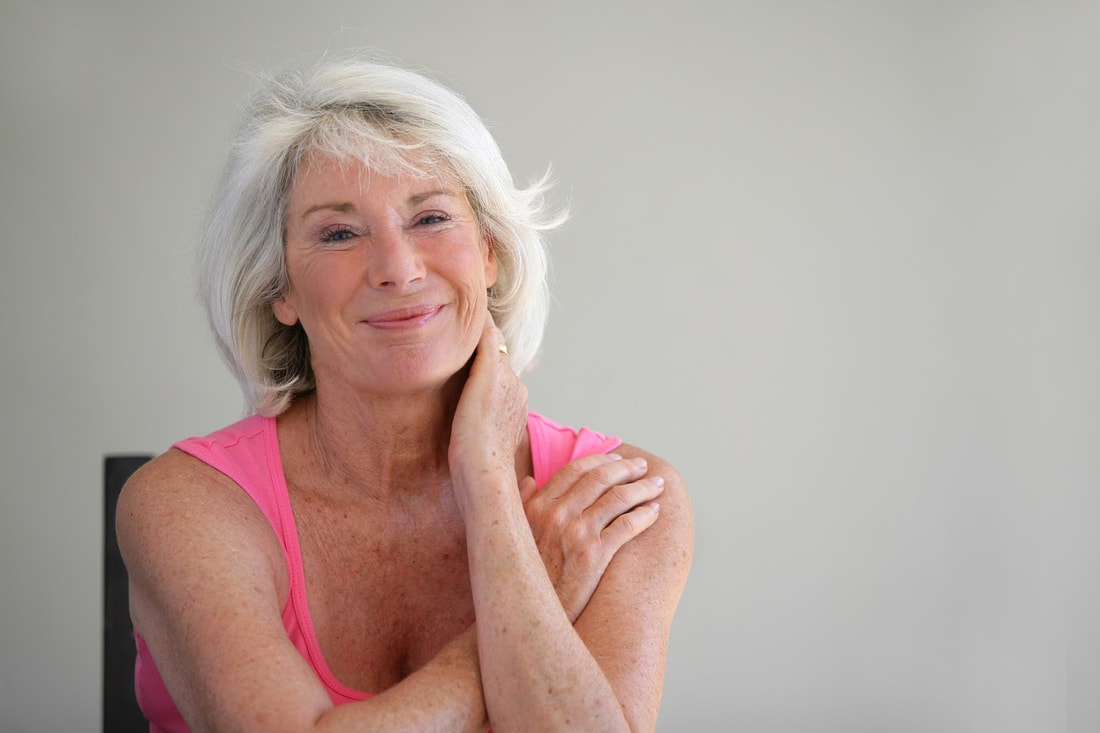

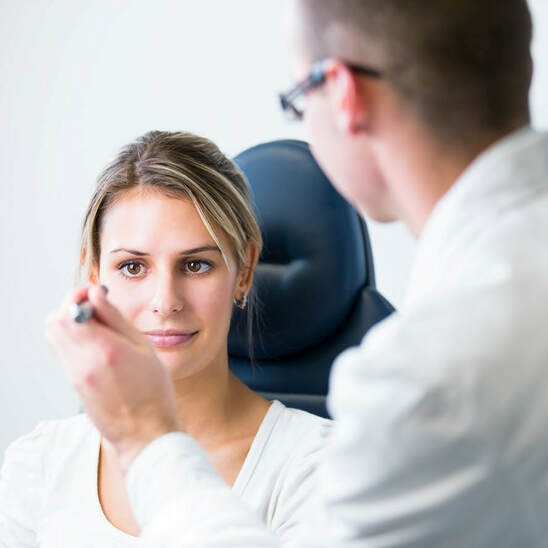
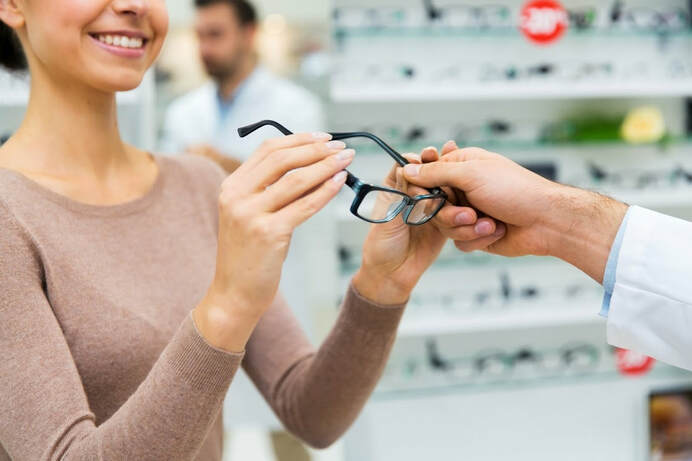
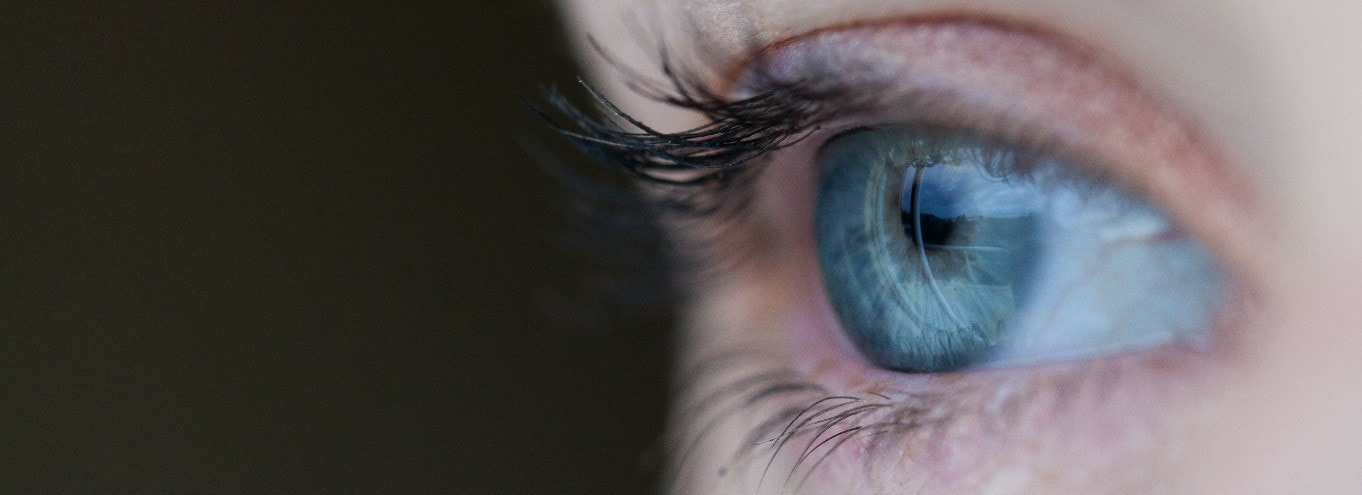


 RSS Feed
RSS Feed